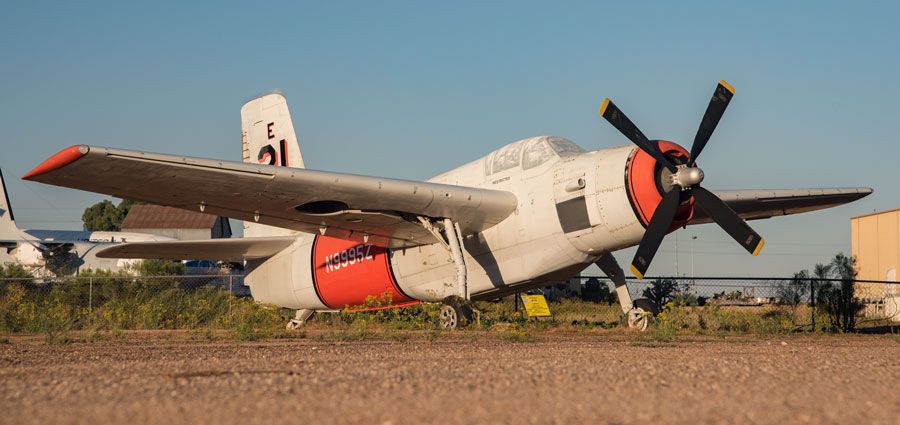Grumman AF-2S Guardian
Design of what would become the Guardian began in 1944 with a Navy request for a replacement for the TBF Avenger torpedo bomber. Several designs were proposed and the one that was finally chosen for testing used both a radial engine driving a propeller and a small jet engine. Delays in engine development resulted in the prototype not flying until December 23, 1946 with the entire program being cancelled the next day. However, the Navy and Grumman were reluctant to abandon all the work put into the design and a highly revised version without the jet engine was proposed for anti-submarine duties. At the time the Navy’s anti-submarine tactics involved the use of pairs of aircraft in “Hunter-Killer” teams. One aircraft carried the search radars and other equipment while the other carried weapons to attack the subs. The two versions of the Guardian were the AF-2S attacker and the AF-2W search plane. Basically, identical the AF-2S had a large internal bomb bay, while the AF-2W carried a large radar dome under the fuselage. The first aircraft were delivered for testing in June 1950 and they began to enter service on the carriers in December of that year. Guardians served on Navy carriers until 1955 when the last of them were sent to reserve squadrons. The last Guardians were retired in 1957. Of the 389 Guardians built only five survived scrapping. These five were purchased for conversion for fire fighting. They flew with the Aero Union Corporation in California until 1973.
Wingspan | 60 ft 8 in. |
Length | 43 ft 4 in. |
Height | 16 ft 2 in. |
Weight | 25,500 lbs (loaded) |
Maximum Speed | 317 MPH |
Service Ceiling | 22,500 ft |
Range | 1,500 miles |
Engines | One Pratt & Whitney R-2800-48W radial with 2,400 horsepower |
Crew | 2 |
Manufacturer
Grumman
Markings
Aero Union Corporation, Chico, California, 1973
Designation
AF-2S
Registration
N9994Z
Serial Number
129233
